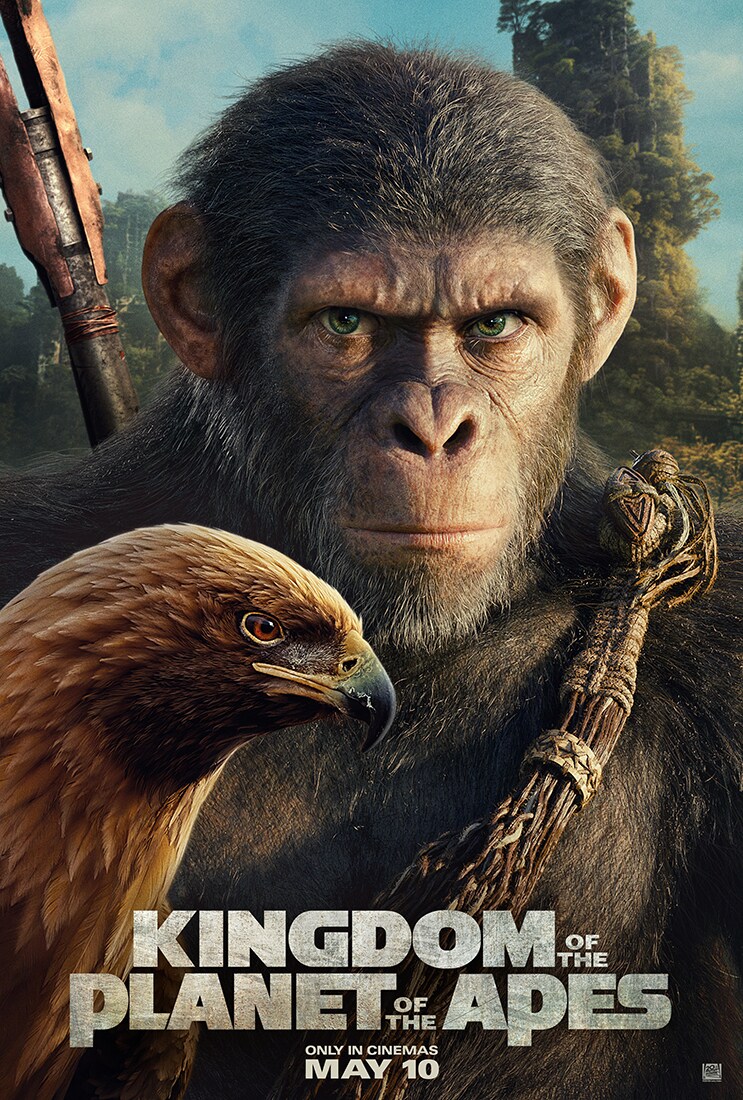“Kingdom of the Planet of the Apes” graces the screen with striking visuals and solid performances. Directed by Wes Ball, the film presents a visually spectacular world where CGI and practical effects merge flawlessly. The apes, made through motion capture, are impressively expressive and convincing.
While not as epic in scope as its predecessors under Matt Reeves, Ball’s “Kingdom of the Planet of the Apes” contributes meaningfully to the saga. It revisits the lessons of history and their impact on the present, albeit through a story that unfolds with less urgency than some might prefer.
Where the Apes Have Been, Where They’re Going
Generations after Caesar’s era, the peace among apes is threatened by the presence of humans. We follow Noa as our introduction to the Eagle Clan. He is a good, kind and responsible young ape. When the Eagle Clan gets attacked by other apes, Noa seeks revenge and redemption. Soon, we are introduced to Proximus Caesar, which sets the stage for a journey that explores the philosophical battles between past and future technologies.
The “Planet of the Apes” franchise’s strength lies in its ability to explore the complexities of humanity (or lack thereof) even in a post-human world. This new addition delves into the manipulation of legacy and the cost of progress, maintaining the franchise’s reputation for examining the essence of humanity. Despite a somewhat leisurely pace and a storyline that takes time to find its footing, the film’s examination of enduring themes — inhumanity and the consequences of technological advancement — adds depth.
Despite pacing issues, “Kingdom of the Planet of the Apes” continues the franchise’s tradition of circling inescapable themes. Inhumanity persists, even in a world dominated by apes. The double-edged sword of technological advancement remains a central concern.
Motion Capture Acting
The acting in this film is impeccable. Owen Teague, the lead actor in this film, does an amazing job of carrying the emotion throughout the story. He makes you want to root for Noa, even when put at odds with human characters. Each facial expression and line he delivers creates a fully believable character, even if Noa is a product of CGI. Lydia Peckham and Travis Jeffery also do extremely well in their acting as Noa’s close friends, even if they don’t have nearly as much screen time. The motion-capture technology continues to impress, even for those who prefer the classic ape suits.
On the flip side, there is Freya Allan. While her acting isn’t terrible, it’s almost impossible to feel bad for her throughout the film. Her actions and decisions do nothing to draw much empathy from the audience. Whether that be a fault of the writers or the acting, it takes you out of the movie and makes you feel somewhat frustrated because of her character.
CGI Cinematography
Visually, the film is stunning. However, this comes as no surprise when you remember that Wes Ball also directed the “Maze Runner” trilogy, which is well known for its incredible visuals. Even if most shots are made entirely from CGI, they are still beautiful and look incredibly real. Ball did a great job at building this world both visually and thematically.
Overall, “Kingdom of the Planet of Apes” is a visually stunning and thought-provoking addition to the franchise. While it may have some pacing issues, the film’s exploration of legacy, progress and the enduring nature of conflict make it a worthwhile journey.



